Early returns: Making sense of some eyebrow-raising NHL numbers
The NHL's public relations department sent out a press release Tuesday highlighting amazing performances and trends from 146 October games.
One particular line in the release jumps off the page: "Hits per game are among the highest on record at 47.8 - only 1999-00 (50.1), 2000-01 (47.9) and 2014-15 (47.1) have been north of 47.0 at this stage (146 GP)."
Offensive skill is at an all-time high, and fighting has significantly decreased over the past decade. Yet, there's been an uptick in physicality early in the 2022-23 season.
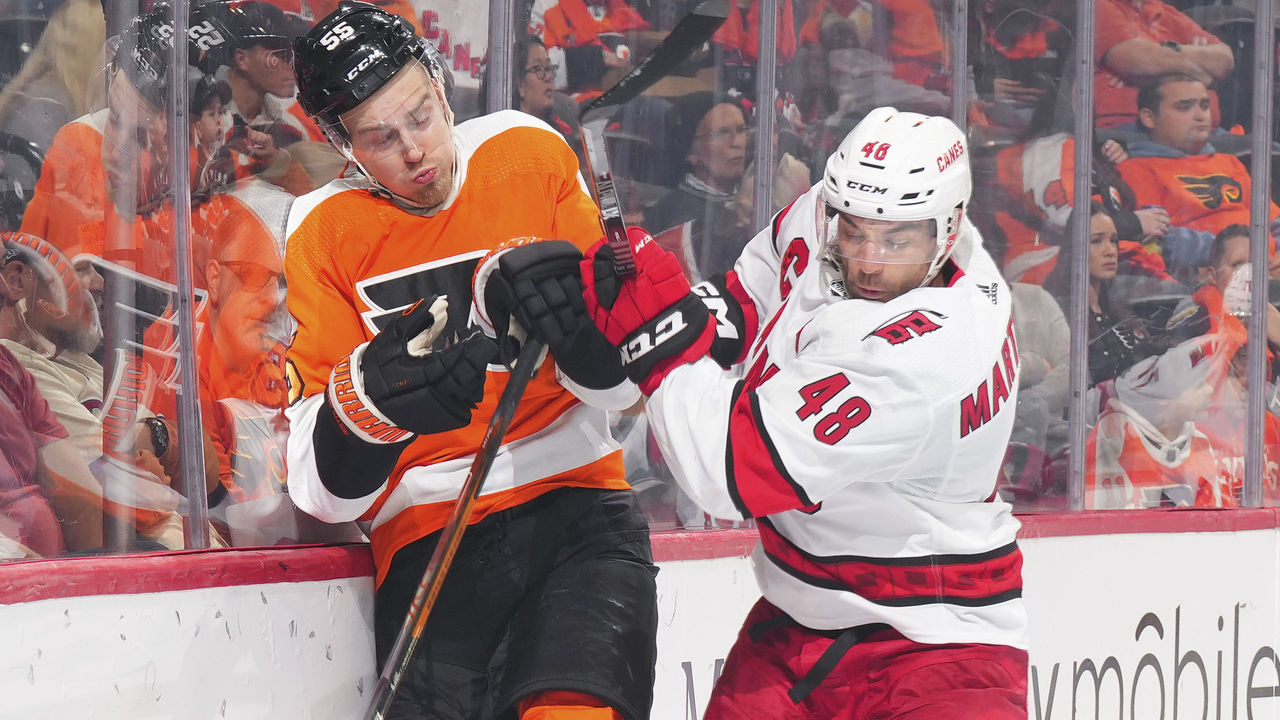 Mitchell Leff / Getty Images
Mitchell Leff / Getty Images"Haven't noticed it," said a member of an NHL team's front office. "Teams get excited in the early season, but outside of one or two games, I haven't seen it."
"Hard to say," an NHL assistant coach said. At ice level, he added, the amount of physicality "seems normal." The coach wondered if the league's stat keepers were trigger-happy to begin the year, counting loads of non-hits as hits.
Whatever the reason, it's a curious development that deserves a future check-in.
Here are four other eyebrow-raising numbers from the young season.
Comebacks in 48% of all gamesIt's the year of the comeback, apparently. On Tuesday alone, seven of 12 NHL games featured a team rallying to victory, most notably the Bruins erasing a three-goal deficit against the Penguins before finishing the job in overtime.
The league reported that a ludicrous 70 of 146 games in October - or 48% - were comeback wins. That rate tied 1986-87 for the highest percentage of comebacks at this stage of a season. What's more, 25 of 146, or 17% of contests, were won by a team that trailed by multiple goals, which the NHL said is the second-highest rate at this stage.
"Who knows what that's about," Maple Leafs head coach Sheldon Keefe said in late October when asked about the trend. "But I think a lot of coaches out there would say it's the early going, and we'll get that sorted out."
Stars head coach Pete DeBoer added this with a laugh: "I think we coach the fun out of the game as the season goes on."
Both coaches make a valid point. Some of this is surely early-season noise. Yet neither bench boss offers a satisfying answer as to why this particular year's early stage differs from the early stages of previous years.
A few theories come to mind.
1) This is the second season of 32 teams, and player talent appears to be spread out more evenly across the league compared to 2021-22. There are still a few walkover teams - Arizona, Anaheim, Columbus - but the gap between playoff-caliber clubs and the rest of the pack seems slightly smaller.
2) Power-play opportunities have increased from 5.78 per game in the past two years to 7.02 per contest this year. A power-play goal can shift momentum.
3) Comebacks, of course, can't happen without a surplus of goals, and goal rates are again on the rise, with the average contest featuring 6.4 total goals. So far, this is the fourth season out of the last five in which scoring is above six goals per game, a reverse of a trend that goes back to the mid-1990s. We're inching toward a golden era for offense - and maybe comebacks too.
Avalanche's 39.3% power play David Becker / Getty Images
David Becker / Getty ImagesAhead of two games in Finland this weekend, Colorado's power play is clicking at 39.3%. It's a gaudy number that nearly doubles the success rate of last season's league-average power play (20.6%). Even a high-octane group like the Avalanche can't possibly be this good with extra manpower ... right?
Let's unpack this anomaly by peeling back three layers of context.
Contextual layer No. 1: The Avs rank 29th in the league in power-play opportunities with just 28 through nine games. Of course, the sample size is generally small because the season is young. Still, it's especially small in Colorado's case because it hasn't been awarded many power plays.
Contextual layer No. 2: Raw power-play scoring percentage rarely accurately represents a power play's overall prowess. It's too reductive - a two-second power play and a two-minute power play are both recorded as one whole opportunity. Better indicators of success are the advanced metrics of goals per 60 minutes and expected goals per 60. According to Evolving Hockey, the Avs rank first in the NHL with 15.2 goals per 60 on the power play, which is great, and 18th with 7.5 expected goals per 60, which isn't so great. No team is outperforming expectations to that degree, and only 15 clubs even have a positive margin against expectations.
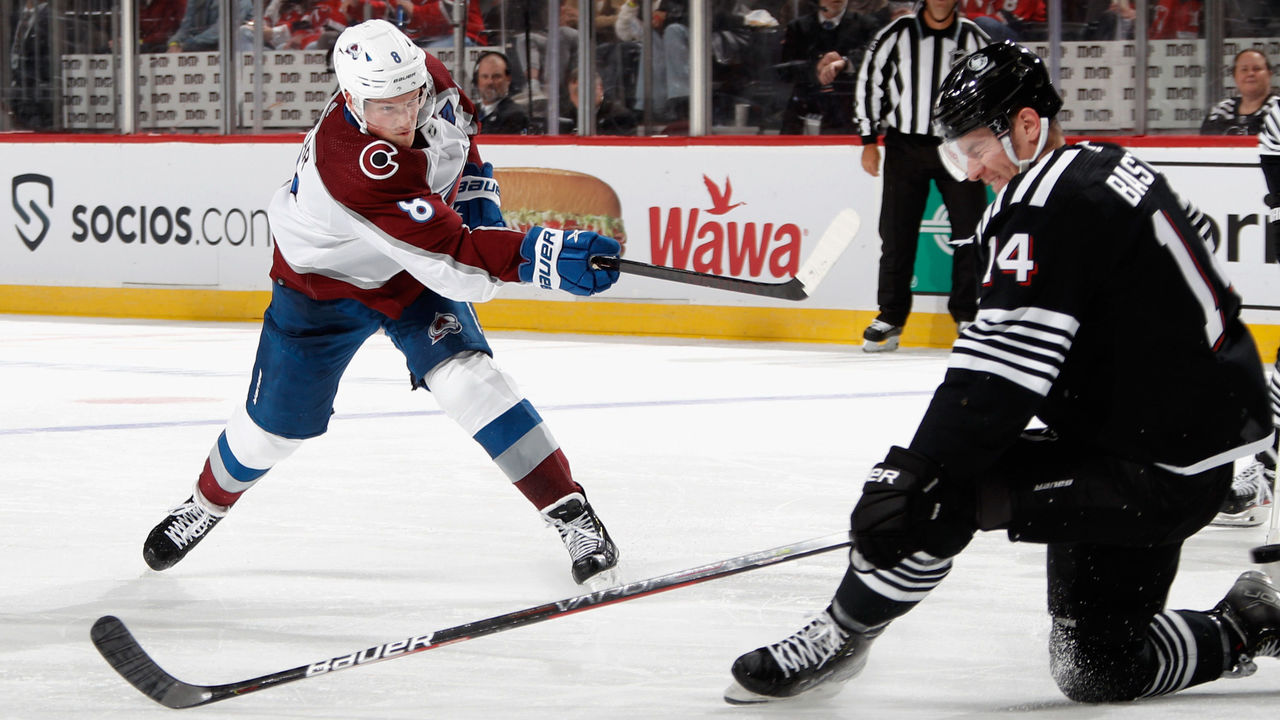 Bruce Bennett / Getty Images
Bruce Bennett / Getty ImagesContextual layer No. 3: Some discrepancies between the goals per 60 and the expected goals per 60 rates can be traced directly to the Avs' abundance of shooting and playmaking talent. Cale Makar, Nathan MacKinnon, Mikko Rantanen, Valeri Nichushkin, and Artturi Lehkonen are all dynamite on the man advantage. (Gabriel Landeskog, too, when he's healthy). As a group, they'll outperform the underlying data, and it'll be interesting to see how the data looks after the power-play percentage inevitably regresses to a realistic number.
Regardless, Colorado's pedestrian 4-4-1 record would be significantly worse had the power play not been blazing hot. It's one of the lone bright spots early in the club's Stanley Cup defense, which is ultimately a marathon, not a sprint.
Devils' 68.6% expected goals share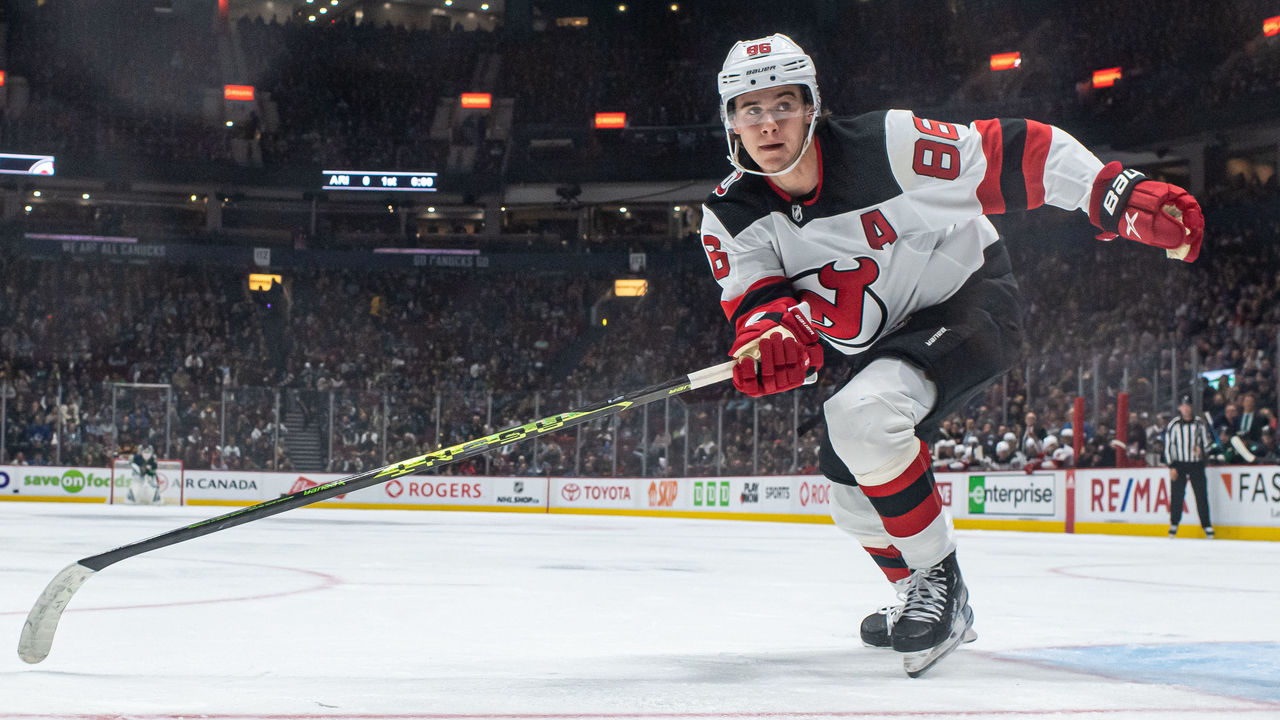 Derek Cain / Getty Images
Derek Cain / Getty ImagesThe Devils have been controlling five-on-five action at a truly absurd rate through 10 games, accounting for a 68.6% share of the expected goals, according to Evolving Hockey.
Simply put, the Lindy Ruff-coached squad is generating a large number of shot attempts and plenty of high-quality looks. Equally as important, they're also defending the opposing attack at an elite level.
These NHL-best underlying numbers have produced a 7-3-0 record and a plus-11 goal differential. It's safe to say the "Fire Lindy!" chants aimed at Ruff during a lackluster opening week of the season have not aged well.
Jesper Bratt and Jack Hughes - who may be the fastest forward duo in the league - have been humming, combining for 26 points and too many highlight-reel sequences to count. Meanwhile, two-way dynamo Nico Hischier is anchoring the other top-six line, and Ryan Graves, John Marino, and Jonas Siegenthaler are driving defensive excellence from the back end.
all you need...
- Devils on MSG (@DevilsMSGN) October 30, 2022
Jack Hughes & Jesper Bratt pic.twitter.com/zav0K36ImD
New Jersey doesn't stop skating and seems to always have numbers around the puck. On offense, that mentality shows in a killer fast-break game. On defense, it shows in the opposition's inability to break through clogged passing lanes. "It's a system built on constant puck pressure," Ruff said.
All that noted, the Devils' expected goals rate will regress at some point, possibly soon. Only two of their 10 opponents made the playoffs last season, but six of their next 10 did. The goaltending, a question mark coming into the season, has been fine but far from spectacular. It's fair to wonder when that position will start negatively affecting the win-loss column.
If you're a Devils fan, though, soak it up. At best, this team will make the playoffs. At worst, it'll be competitive. The core built around Hughes and Hischier is finally seeing results after a few dark and frustrating years.
Pastrnak's 5.5 points per 60 minutes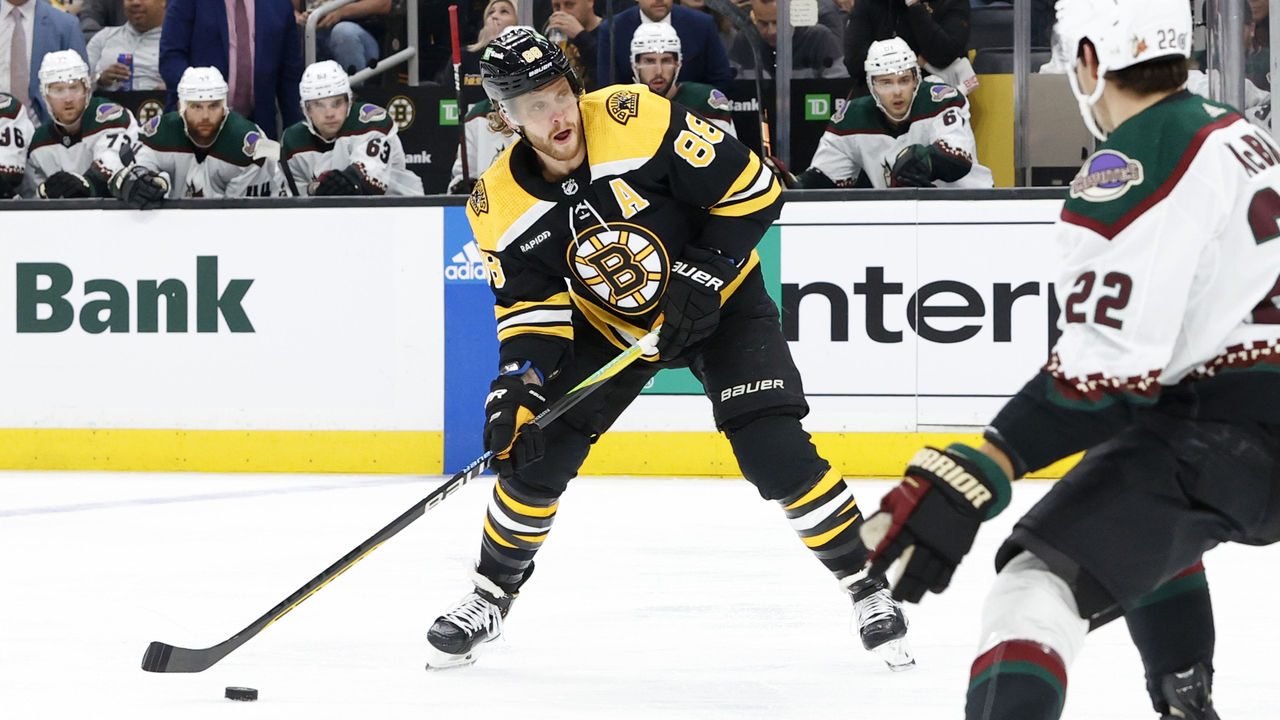 Icon Sportswire / Getty Images
Icon Sportswire / Getty ImagesDavid Pastrnak has bolted off the starting line with 18 points in 10 games.
The 26-year-old Pastrnak is third in NHL scoring and lapping his Bruins teammates in efficiency, as illustrated by the 5.5 points he's averaging per 60 minutes of ice time. Boston's next-best per-60 point-getters are David Krejci (3.6 points per 60), Patrice Bergeron (3.3), and Jake DeBrusk (2.9).
Pastrnak - who seems to have officially graduated from star to superstar - is on pace for 148 points, including 57 goals off 467 shots on goal (he leads the league with 5.7 shots per game). An off-wing sniper, all seven of Pastrnak's goals so far have been scored from the left circle or slot areas:
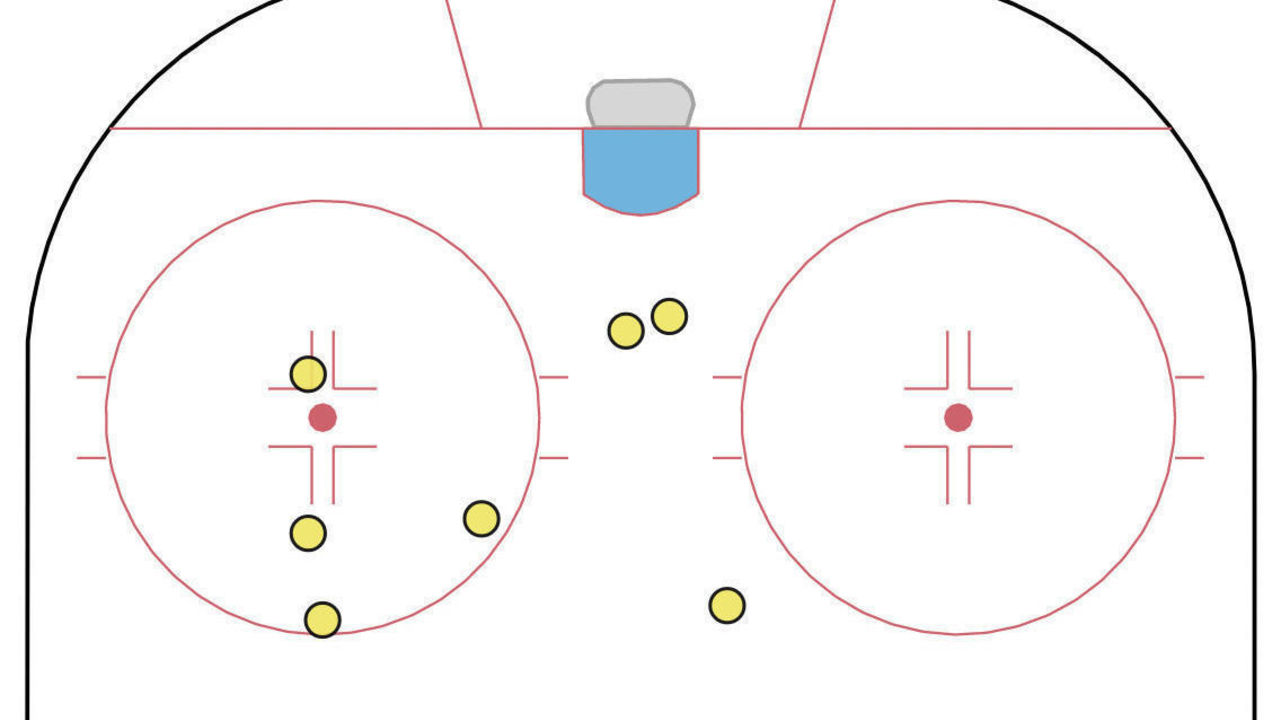 Evolving Hockey
Evolving HockeyThe most intriguing aspect of Pastrnak's early-season surge? He's a pending unrestricted free agent who's happy to negotiate an extension during the season. Every goal and assist has given him additional leverage against the Bruins - though the team can't be too upset.
"I would think his deal is somewhere between 10 and 11," a rival agent texted Wednesday, referring to an average annual value of $10 million to $11 million. The agent added that a yardstick contract would probably be the eight-year, $84-million extension Jonathan Huberdeau signed with the Calgary Flames in August. (That deal, which carries a $10.5M AAV, doesn't kick in until 2023-24.)
From a strictly here-and-now perspective, Pastrnak is feeling it at an ideal time. Despite being 9-1-0, the Bruins have yet to ice a full lineup: Charlie McAvoy is close to returning to action but hasn't appeared in a game this year; Brad Marchand missed the first eight games; Matt Grzelcyk missed four; and Krejci was recently placed on injured reserve.
John Matisz is theScore's senior NHL writer. Follow John on Twitter (@MatiszJohn) or contact him via email (john.matisz@thescore.com).
Copyright (C) 2022 Score Media Ventures Inc. All rights reserved. Certain content reproduced under license.